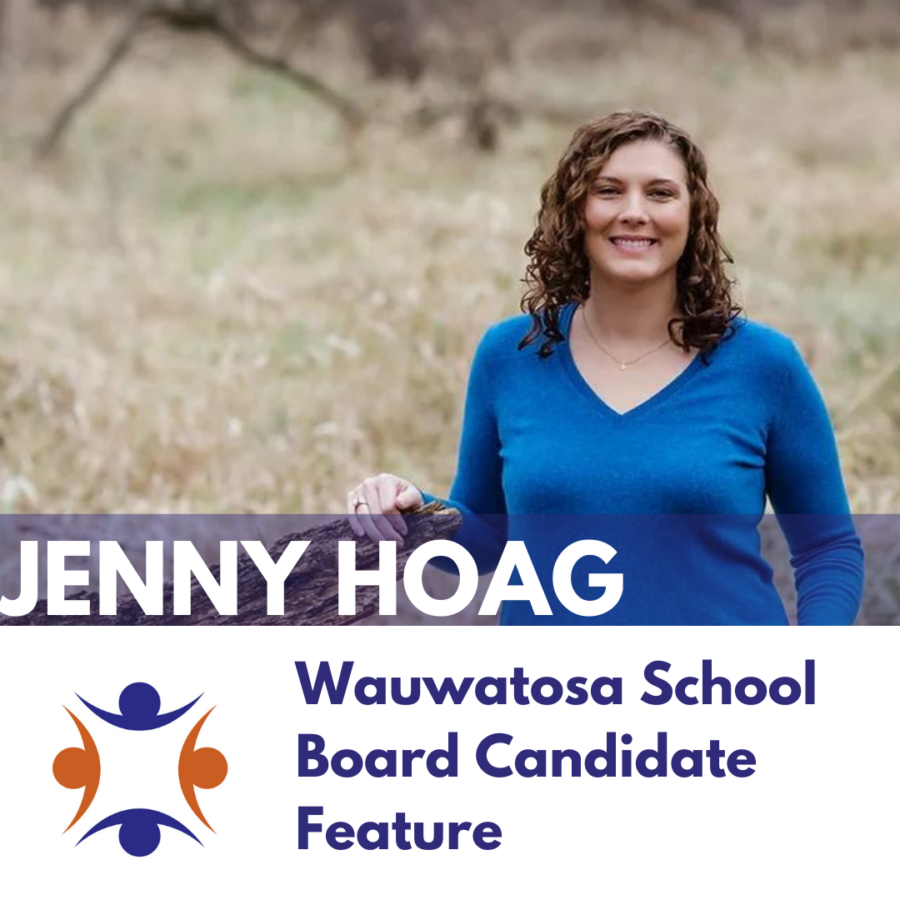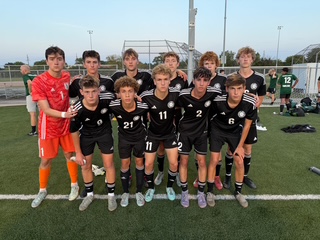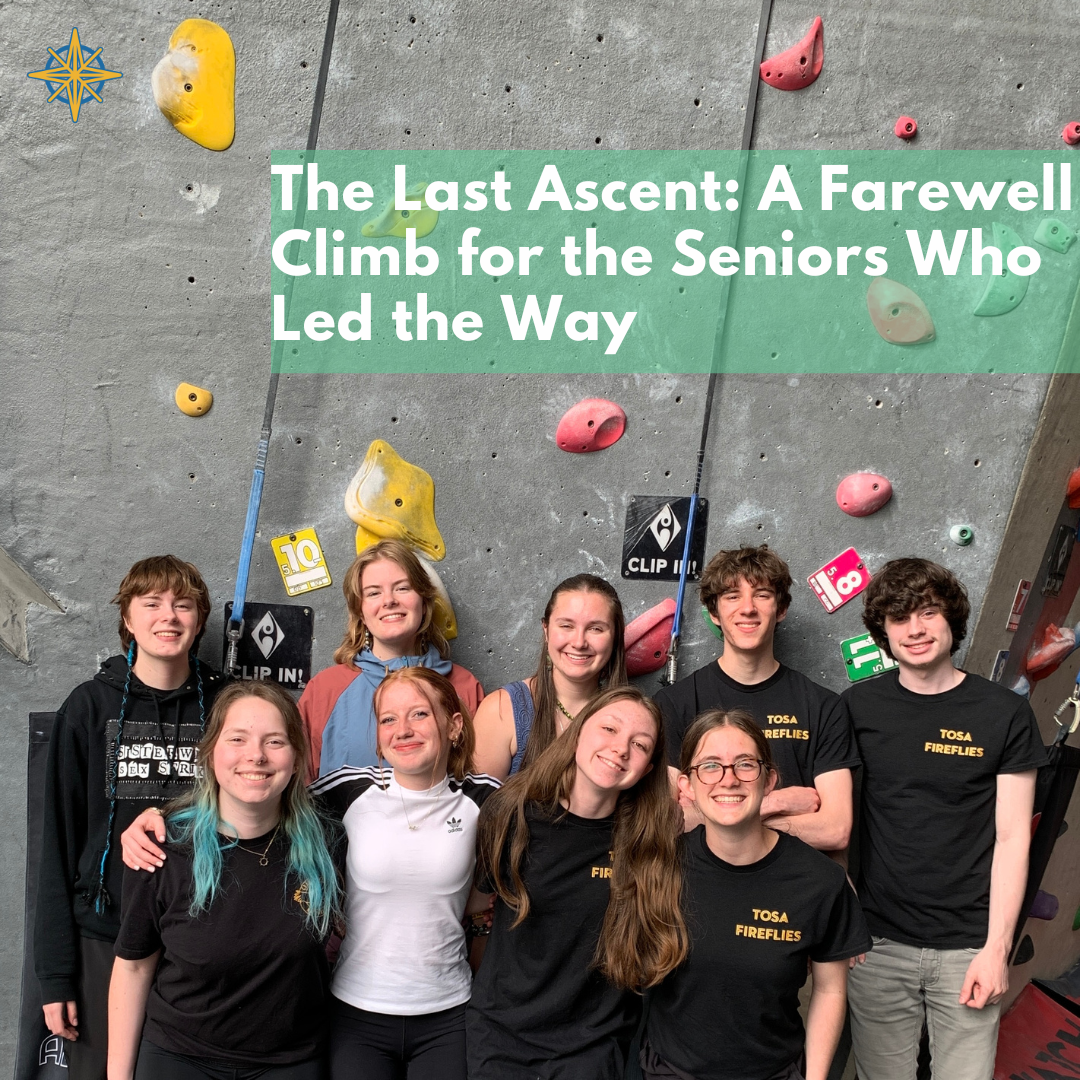School Board Candidate Feature: Jenny Hoag
March 17, 2022
Jenny Hoag is running for seat 1 on the Wauwatosa School Board this year. Her top priorities if elected are mental health, teacher recruitment and retention, and meeting the academic needs of all students. She is a Pediatric Psychologist at Children’s Hospital, so she has a unique standpoint on student’s mental health. She was also on the Medical Advisory Panel, which works with the school board to give advice on medical issues, especially regarding COVID-19. She has two boys at Lincoln.
How do you think that your job will shape how you make decisions as a school board member?
One of the reasons I want to run is that I have a mental health background and expertise. I think, knowing that this has been a really difficult two years for everybody, that this is really the time when we need somebody on the board who has that area of expertise. We’ve seen rising cases of mental health concerns in children, adolescents, and teachers. Honestly, I mean, we’re seeing high rates of burnout in teachers and students. I think there’s a lot of opportunity for me to use my background and my expertise to provide a different lens for the school board.
How could your previous experience on the medical advisory board help you on the school board?
The medical advisory board has been a wonderful opportunity. I’ve certainly been much more intimately involved with how the school board functions and also other items outside of COVID that are most pressing in the community, because those are the things that are coming up on the agendas each meeting. I consider myself someone who can work with lots of different kinds of people with lots of different perspectives. And to recognize that everybody on the school board has a little bit different lens, but that we’re all there to do the best we can for the students, staff, and teachers.
As we come out of the pandemic, where do you hope to see the district, especially students and staff, in regards to mental health?
We’re never going to eliminate mental health problems. What I would love to see put in place is a system that allows us to identify who’s most at need, and then to meet those needs. That might be a kind of triage system where people who are at risk of some kind of mental health difficulty have access to services within the school building, maybe that’s some of the behavioral specialists at the high school and middle school level, maybe that’s going to be meeting with the new counselors, I’m thinking of them more from a therapy standpoint, the therapists that they’ll have in the building. Hopefully there’s access to that. Then I think we need to have a system in place to recognize those people who are at most risk for having mental health problems, and then helping to ease their transition in and out of school. I’m thinking of people who are admitted to Rogers hospital, or someplace similar and had a mental health crisis. Since now they’re coming back to school, how are we supporting them as they come back into the school building? And then kind of our bottom level is going to be those kids, you know, just like everybody in the district, we need to be aware that everybody has sadness and anger and you know, moments of rage, and that that’s a part of the human experience. And we need to, you know, again, have that shared vocabulary and an awareness that we can all work on our resiliency so that we can deal with the distress whenever it comes up.
What other major platforms or changes do you want to bring?
My three top priority areas are mental health, teacher recruitment and retention, and meeting the academic needs of all students.
I’m a parent of two boys who are at Lincoln, and we’ve had the most phenomenal teachers every year. I really feel like the teachers and our staff are the foundation of having a good school district. If we don’t have teachers that inspire students, that make students feel safe and cared for, and make kids excited about learning, school is not going to be a place kids want to be. I really think we need to work on recruiting the best teachers that we can, making Wauwatosa the place you want to come to in the Milwaukee area.
Also, teacher retention is something that is hugely concerning for me. There was a survey that came out that I read maybe a month ago that said 50% of teachers that answered the survey were thinking about leaving their careers, not just leaving their current school, but leaving the field of teaching. That would be absolutely devastating to everybody, but to our students in particular. To solve this, we need to think about teacher retention. I think some of that has to do with how we compensate our teachers. Our rates of compensation are lower than they are in some of our neighboring districts. The school board right now is working to increase teacher compensation, which I’m excited about, but there’s more than that. There’s more that’s leading to teacher burnout. I think we need to know in our district what those things are. Some of that is going to be done through a recent survey. We’re going to need some new data to find out what is making our teachers want to leave the field or the school district, and then I’m hoping we can attack each of those or have solutions for each of those as we move forward over the next year.
My other piece of priority is really recognizing how to meet the academic needs of all of our students. There’s a lot out there about achievement gaps or losses of learning because of COVID. The reality is that we know that groups of students have struggled because of learning differences or marginalized status. I hear in the community about differences in service or access to service, or just differences in what’s available to students who live on the west side, and students who live on the east side. I think we have some inequity in our system, that we’re really at a point where we need to acknowledge, we need to identify who is struggling in their learning, and then assess as to how we are to meet their needs. There’s some Esser funds that are built in that are supposed to be for finding those students who are at risk for some academic difficulties, who are maybe starting to fall behind their peers, but aren’t yet at a place where they would qualify for special education services. That gap group I often feel like gets overlooked. I’m excited to see that there’s going to be some funding set aside to identify those kids and to give them some special support, and help them catch up. That’s not going to be the only answer. We need to identify other places where we see these gaps in learning, and we need to have a more individualized approach to make sure that everybody can succeed.
What will you do to make sure that students’ input is heard on the school board?
I really appreciate that we have the two student representatives who are part of the school board meetings. I would love for there to maybe be more student representatives, so that there’s a louder voice and more opportunity to speak.
I work in this multidisciplinary environment where I work on the medical team, but I’m also a psychologist, so I see the kids who are coming to the hospital for cancer care. They’re my patients too, but their priority is their medical care. One of the things I’ve noticed in these kinds of settings is that certain voices are heard and other voices are not heard unless they’re intentional. One of the things I would love to see is a designated opportunity for students, where we want to know what it is that they’re hearing from their peers. What is their stance on this, because the things that the students do say, I often find really profound. They’re often really eye opening. I would love to see more voices, more student voices, and honestly, I’d love to also see more staff and teacher voices. I think that’s something else we don’t get a lot of.
How do you want the ESSER funds to be distributed, especially regarding your priorities like mental health?
The ESSER funds, it’s this huge pot of money. Dr. Means right now, is kind of earmarking a little over 50% of it for mental health. Something like one and a half million dollars is being set aside for mental health in our district in the next two years. Dr. Means has got some preliminary plans about how that money would be used and I think there’s some really promising things that I see there. However, I also think the focus of that programming and those positions right now is kind of crisis intervention. It’s, you know, how do we get through this really difficult time, and it addresses a lot of issues that are kind of related to behavioral dysregulation, or kind of disrupted behaviors in the classroom, there’s not quite as much attention paid to people who have, you know, kind of what I consider like quiet mental health challenges, things like anxiety and depression, things that don’t necessarily disrupt anybody else, but are significant and impact their quality of life. I would love to see more energy put into managing or helping with those behaviors. Then the other thing is once we get past this crisis period, and we’re able to help through this transition, the other big piece that we have to think about is how do we be more proactive as a district to support the socio-emotional learning of students in the district. I’d love to see a program or curriculum made throughout the entire span of a year. Maybe starting in JK, talking about resilience and coping, and just making that part of our shared vocabulary as a school district.
There needs to be some really fast initial planning around those extra dollars. That’s going to be a huge, huge undertaking in the next five or six months, until we get to the next school year. We only have until September of 2024 to spend all of that money. And, you know, this is a one time pot of money. The programs that we have that we’re going to create, not all of them, unfortunately are going to be able to move forward beyond 2024. We need to have not just thoughtfulness that goes into what we are spending that money on, but also how are we identifying what’s working well, for our students and staff and what’s not working, you know, since some of it is going to have to eventually be cut out of the budget. I really want to see there be thought that goes into how we measure. What are our metrics that measure how well these programs are meeting the needs that they were intended to meet?
What are some of the things that you want students to learn about their mental health?
I love the power of positive thinking, I think that’s wonderful, but I’m a huge believer in the need for people to learn how to tolerate distress. No one goes through life with all good things happening. I wish that was the case, you know, I wish that we give everybody a completely joyful life, but that’s not a reality for anybody. We’re gonna all hit hard times in our life, we’re gonna all have moments of grief and sadness, and anger and worry, and we need to know what to do when we hit those. Although positive thinking has a role, it’s not the only solution, and that’s for people who don’t have mental health issues. That’s just for mental wellness, you know, like, prevention of mental health issues. But once you are at a place where you have true mental health issues, like we need to really be doing much more than just saying, “Oh, don’t worry about that.” or “Think positive things, and you won’t be sad anymore.” If it were that easy, then there would be no mental health providers that existed, we would have no role, which would be lovely, but it’s also not true.
That is a huge difference that I do want us to recognize. I absolutely am in favor of teaching mental wellness. One of the one of my roles here at work is to run a wellness committee, there’s about 200 or so people who work in the Mac Fund Center, and I run the leadership. I am the leader of the Wellness Committee for those 200 people, so I have a lot of different initiatives that I helped guide and have created over the last two years that the committee has been in existence. Those are wonderful things, but they are specifically geared toward, you know, helping you to reduce burnout, helping people to learn new strategies to be more mentally well, or to learn different ways that people can practice self care. However those aren’t adequate in any way for people who have mental health issues, they require a whole different level of care. Everything has a place, there’s a role for both of those, but we can’t mistake one for the other.














